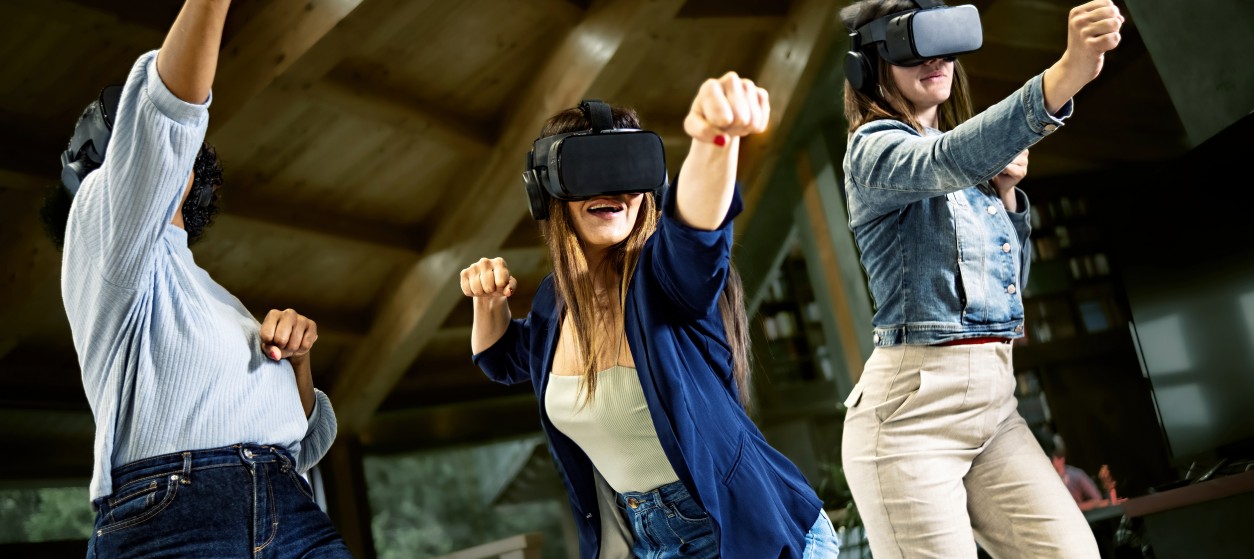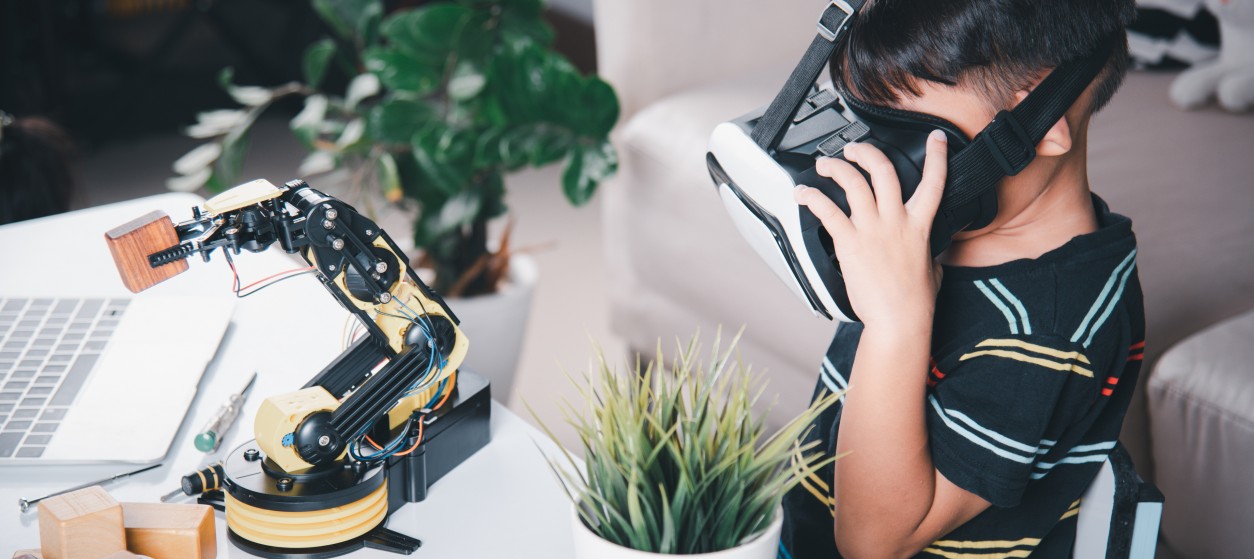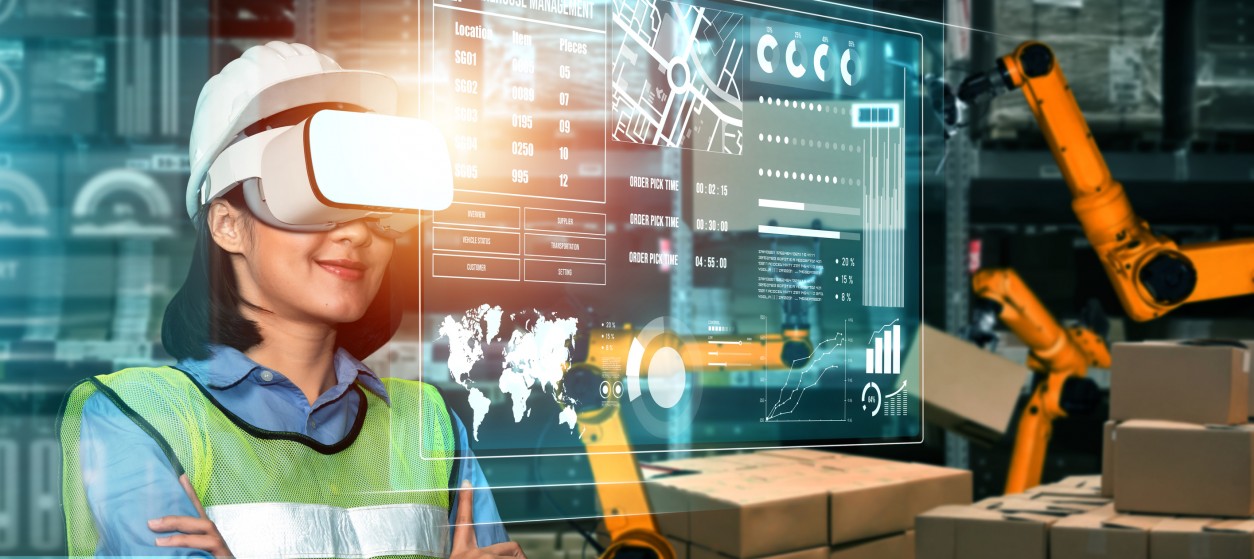For over a decade, enterprises have been using Virtual Reality (VR) applications to simulate business processes, as well as how humans interact with these processes. Specifically, VR enables enterprise workers and customers of business services to interact with a realistic cyber-representation that simulates a real-life setting. These interactions take place in the scope of 3D environments by means of electronic devices like 3D glasses or sensor-enabled gloves.
Even though VR applications are nothing new, enterprise interest around them appears intensified. This is probably due to the COVID19 outbreak, which has underlined the importance of transforming physical activities into virtual ones. Since early 2020, companies are seeking effective ways to virtualize their activities in a variety of areas including training and virtual presence. Moreover, the technology enablers of VR (e.g., VR end-user devices) are gradually improving in maturity and are offered at reduced prices. These factors make VR one of the technologies that will attract increased attention in the years to come.
Key Value Propositions of VR
Apart from being an impressive technology, VR provides some compelling value propositions for business enterprises. These propositions are found in the following areas:
- Virtual Collaboration Environments: During 2020 companies have made extensive use of virtual meetings and tele-conferences using mainstream web conferencing tools. In several cases, virtual meetings have become the primary collaboration modality between enterprise teams. Much as existing tools provide a very rich set of functionalities, they can hardly replace some of the features of physical face-to-face collaboration. One of the main limitations lies in their inability to capture the context of physical spaces like plants, shopfloors, and laboratories. VR alleviates this limitation by simulating real-life collaborative environments and enabling interactive functionalities like screen-sharing and blackboard collaboration. In this direction, VR applications that provide cyber-representations and simulations of physical environments are nowadays trending. Interaction with such cyber-presentations yields much more effective collaboration environments than conventional virtual spaces that are limited to office-based collaborative sessions and tools (e.g., collaboration on word documents and spreadsheets).
- Training on Physical Activities and Processes: Training is one of the most popular VR applications. There are special cases where VR-based training provides significant value over other forms of online training. This is for example the case with hands-on-training that depends on access to physical environments or equipment. Conventional on-line training cannot support such forms of practical training. However, VR applications can enhance the training experience with cyber-presentations of physical world items and facilities, which can enhance the efficiency of online training. In several cases, VR can complement other training modalities such as on the job training. For example, VR training can be used to boost the safety of the workers in practical training cases that take place in harsh environments. Instead of coaching workers in dangerous and harsh environments, similar training is provided in VR environments.
- Supporting Leadership and Soft Skills: It is nowadays acknowledged that formal education cannot adequately cover leadership and soft skills, including for example management, sales, presentation, and negotiation skills. VR environments are ideal for training employees in business settings where they face customers and business partners. As such they are very powerful for augmenting conventional training programs with modules that endow trainees with the ever-important leadership and soft skills.
Prominent Application Sectors and Use Cases
The above value propositions of VR environments are applicable to many different sectors. Prominent examples include:
- Healthcare: VR environments can be used to train surgeons in realistic environments. This is becoming increasingly important, as it is one of the best ways for surgeons to increase their experiences from real-life settings. In the future, VR will be combined with Augmented Reality (AR) to enable telesurgery and other ways to provide remote support to surgeons.
- Tourism and Hospitality: VR technologies facilitate the creation of realistic environments, where hospitality employees (e.g., receptionists, hotel managers) can be trained in customer-facing experiences. This is particularly important for this industry, as employees must be trained to handle many different clients from a variety of cultures.
- Industrial Training: Industrial sectors like manufacturing, oil and gas, and mining, require workers trained in complex physical environments like manufacturing shop floors, industrial plants, mines, and oil refineries. These environments are sometimes harsh and dangerous for the workers. VR provides a safe way for training workers in practical settings.
- Construction, Architecture and Creative Industries: Collaboration is a critical success factor for various creative industries, including for example architecture and publishing. VR environments enable employees to collaborative virtually, yet in realistic settings. In this way, they boost the efficiency of the collaboration and the production of high-quality outcomes (e.g., designs).
The above-listed sectors and applications are indicative. VR can enable an unlimited number of innovative applications in many different sectors, far beyond the given examples.
Assembling a VR “Dream Team”
The development and deployment of successful VR projects is not however an easy way out. VR is a relatively new technology and true VR experts are a scarce resource. There is a talent gap in this technology, and there are very few skilled engineers around the globe. In this context, assembling a competent team is a key to the success of a VR project. Such a team must bring together individuals from different disciplines, including:
- VR Business Analysts, i.e., experts in the business benefits of VR. These experts are in charge of translating business requirements into potential VR projects. They are responsible for identifying the use cases where a VR implementation can provide tangible enterprise value.
- VR Customer Journey’s Experts e., professionals that can design VR journeys and use cases for potential customers. These experts can identify the number and nature of users’ interactions with different VR cyber-representations, as needed for accomplishing the business goals at hand.
- VR system developers and integrators, i.e., experts responsible for selecting the VR hardware, building the VR software and integrating both in a complete VR service. They undertake to solve technical problems and to test thoroughly the VR product/service prior to its launch.
In the coming decade, such VR expert roles will be part of most enterprise IT teams.
Overall, VR is already a powerful tool for enterprise productivity, which boosts training, collaboration, and safety. COVID19 may have acted as a catalyst that accelerated the implementation of VR systems, yet the value of these systems was acknowledged long before the pandemic. In the coming years, the lowering costs of VR hardware could give an additional boost to the adoption of this exciting technology. Therefore, it is certainly worth keeping an eye on it and understanding whether and how it could help your business.










